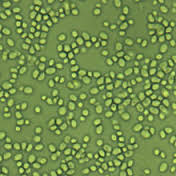Evaluation of possibilities of genotyping of Candida glabrata clinical isolates with RAPD-PCR method and microsatellite analysis
Keywords:
Candida glabrata;Genotyping;Microsatellite (GACA)4;RAPD-PCRAbstract
The aim of the study was to compare the discriminatory power of RAPD-PCR method using RSD10 primer and microsatellite (GACA)4 analysis for genotyping clinical isolates of C. glabrata. Isolates were received from patients of two Polish hospitals: Children's Memorial Health Institute in Warsaw (n=17) and Medical University of Gdansk (n=37). Species identification was confirmed by two phenotypic methods: growth on chromagar plates (Biocorp) and Candida API ID 32C test (bioMérieux), as well as by PCR reaction. For both tested methods for genotyping, the size of amplified DNA fragments varied mainly between 200 and about 3000 bp. The sets of 9 and 8 different products of amplification were obtained in the case of microsatellite and RAPD-PCR method, respectively. The amplicon arrays were analyzed and dendrograms were constructed using a matrix generated by UPGMA (Unweighted Pair Group Method with Arithmetic Means) in MVSP program (Multi Variate Statistical Package) version 3.22. As a result 20 different genotypes were distinguished in the case of microsatellite analysis and the collection of strains was divided into 26 genotypes in the case of RAPD-PCR analysis with RSD10 primer. Additionally, an evident correlation between genotype classification and geographical origin of the isolates was observed in the case of RADP-PCR method. The performed investigation revealed that RAPD-PCR amplification with RSD10 primer represents high discriminatory power in molecular differentiation of C. glabrata clinical isolates and can be recommended for at least preliminary analysis of possible route of transmission of this pathogen in hospitals and community.

Published
How to Cite
Issue
Section
Copyright (c) 2013 P. Szweda, K. Gucwa, L. Naumiuk, E. Romanowska, K. Dzierzanowska-Fangrat

This work is licensed under a Creative Commons Attribution-NonCommercial-NoDerivatives 4.0 International License.



